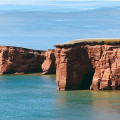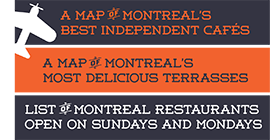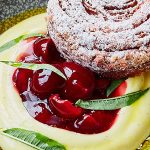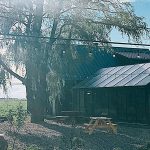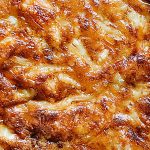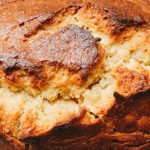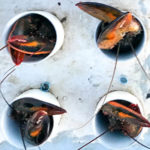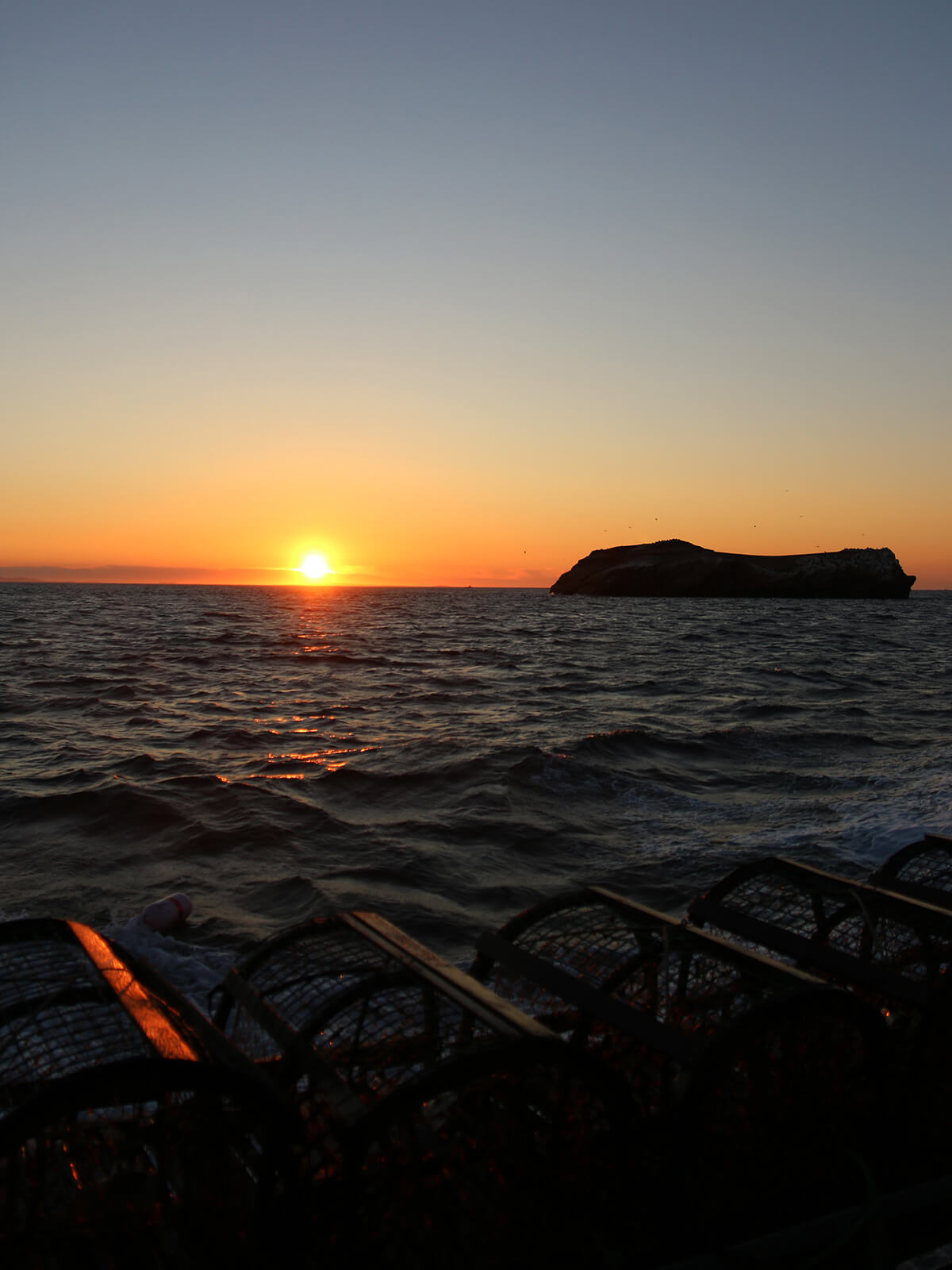
Pulling the first cages before the sun is even up
I visited Quebec’s Îles de la Madeleine last June. I had wanted to visit for years and was very much looking forward to chilling on the charming islands for close to a week, enjoying some of the best lobster in the world, walking along the immense deserted beaches and taking in the unbelievable beauty all around. What I was looking forward to the most, however, was going lobster fishing! I had managed to secure a spot on Les Cultures du large’s boat and was crossing my fingers that it would be smooth sailing on the designated day.
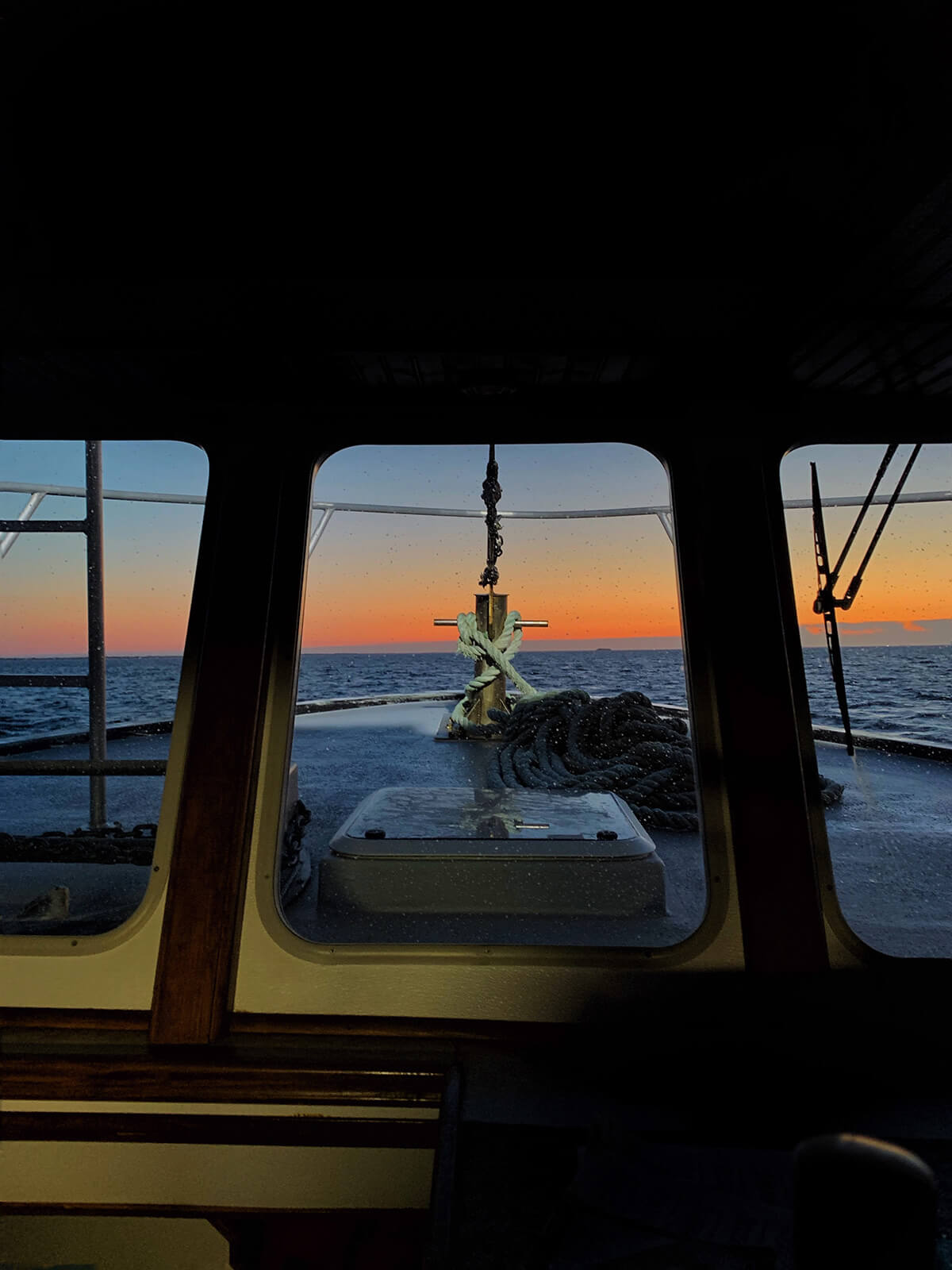
Sunrise from the captain’s cabin
Fishing season
Commercial lobster fishing season is short on the islands. It starts with anticipating towards the beginning of May and ends 9 weeks later in July. There are 325 lobster fishermen on the islands. Each of them owns 273 cages scattered around the waters. Fishing is very controlled, as it should be, to avoid overfishing. In fact, the Îles de la Madeleine lobster fishermen had to cut back on the number of cages they own to prevent overfishing, and for now, the lobster population is thriving splendidly.
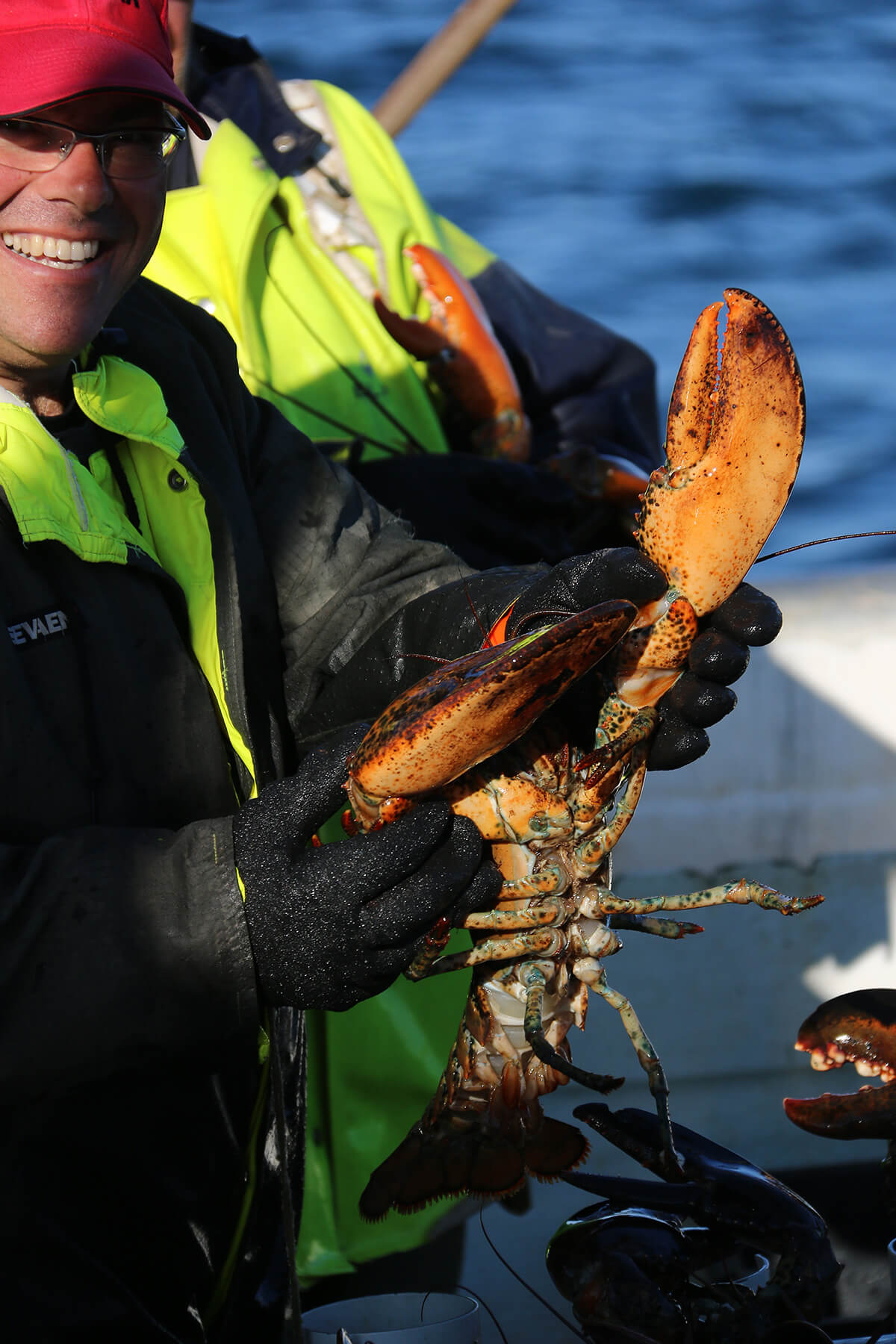
Captain Christian with a huge catch
Lobster catching takes place 6 days a week during the season. The fishermen can’t afford to lose too much time when the season is so short. The days are long and hard but very rewarding, with an average of 800 to 1200 pounds of lobster caught on a daily basis.

Waiting to throw the cages back in
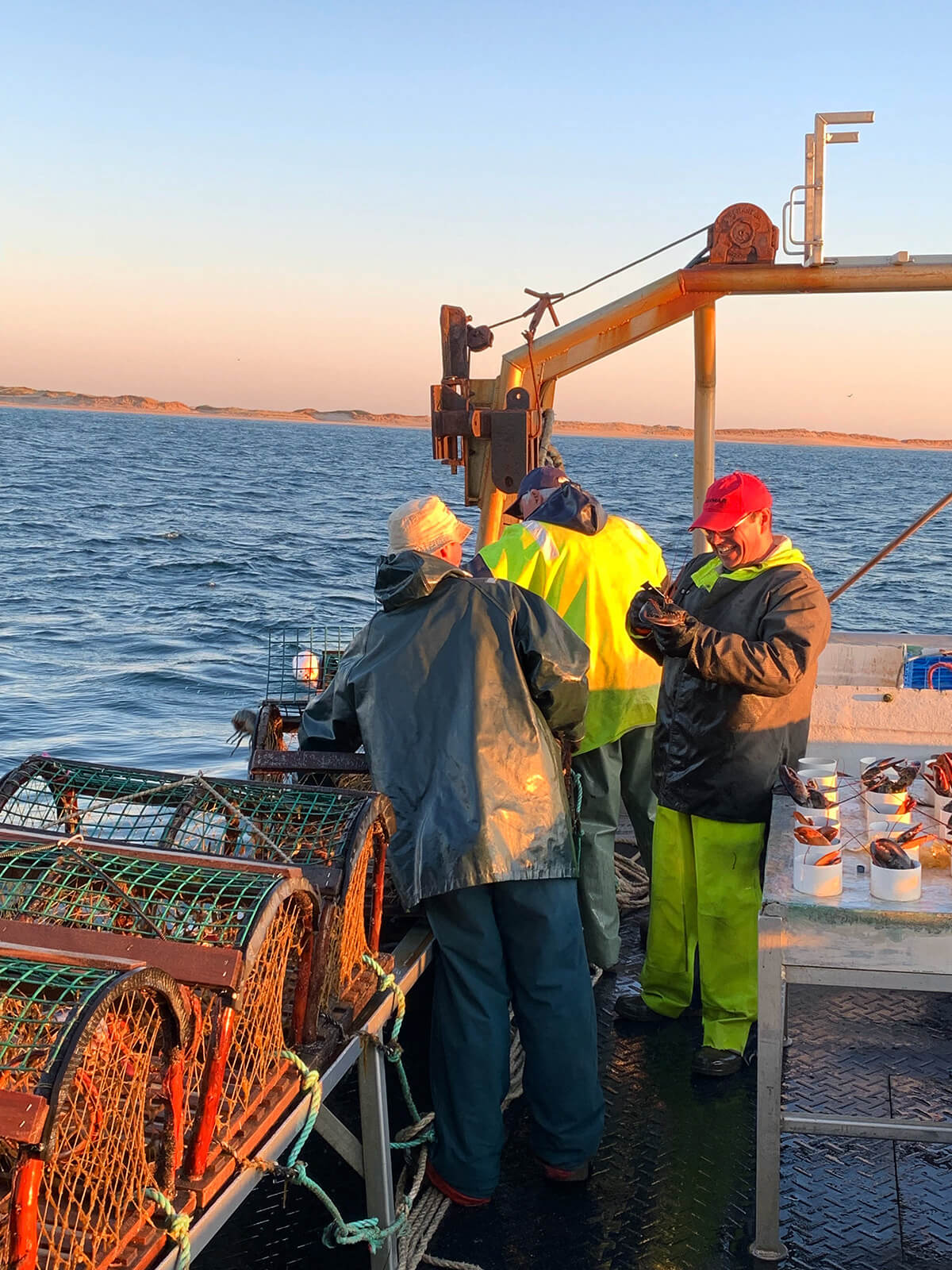
The men chat while sorting the caught lobsters
Catching lobsters
We met up with Christian Vigneau of Les Cultures du Large at Quai de La Pointe-Basse on Île du Havre aux Maisons at 4am. Many of the colourful fishing boats had already lifted their anchors and were ready to head off into the pitch dark vastness of the Gulf of St Lawrence. With their singing island accent and famed good humour, Christian and his two-men crew welcomed us aboard the Marie Gabrielle I like old friends. We headed into the captains’ cabin and rode for about an hour as the sun rose. Captain Vigneau has been working on lobster boats since he was 14. He relies on a sophisticated computer system to find his marks, or the buoys that indicate where his cages are. In the old days, the fishermen’s expert eyes would spot and recognize their buoys (among hundreds) without the help of a computer. Once the first marker is found, the boat slows down and circles around it until one of the crewmen fishes it out with a hook. The rope is spun around a pulley that proceeds to pull the 7 cages out, one at a time. The cages are then opened and any remaining bait is thrown to sea. Any other species of fish are also thrown out while crabs are pulled aside to be used as fresh bait. Each lobster is carefully measured from the corner of the eye to the thorax with a special tool. If it’s smaller than the measuring tool (83mm), it’s thrown back into the water. It’s illegal to catch the small crustaceans and the fine can be pretty hefty. Females carrying eggs are also thrown back. Cages are filled with bait again while the boat moves to another spot on the water. They are then pushed in one by one with the buoy thrown behind them at the very end. The boat then moves on to the next spot to do it all again a total of 39 times every day. The men move in perfect harmony like a well synchronized ballet. It was absolutely fascinating to watch.
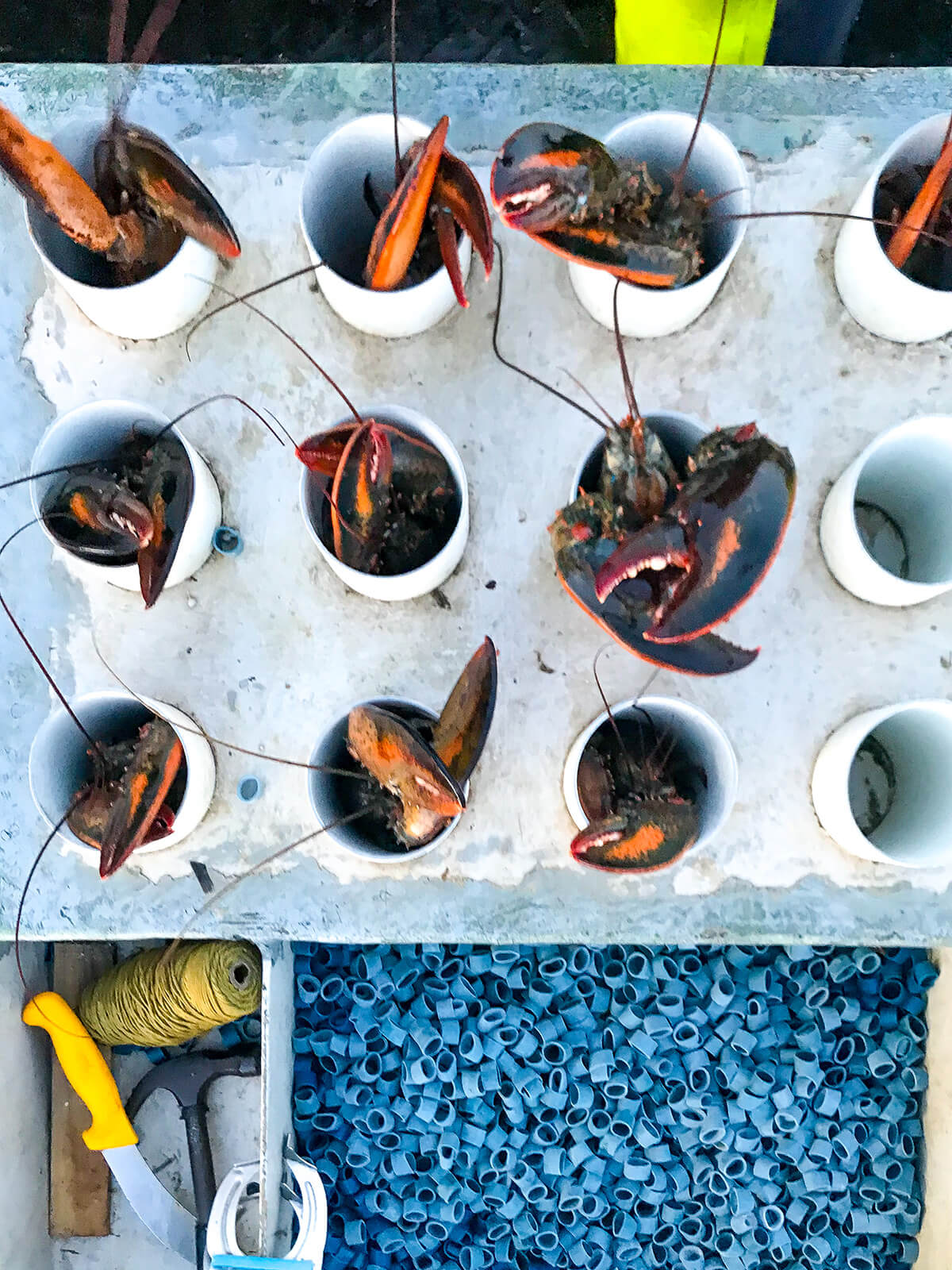
Caught lobsters in plastic cylinders await their claw elastics
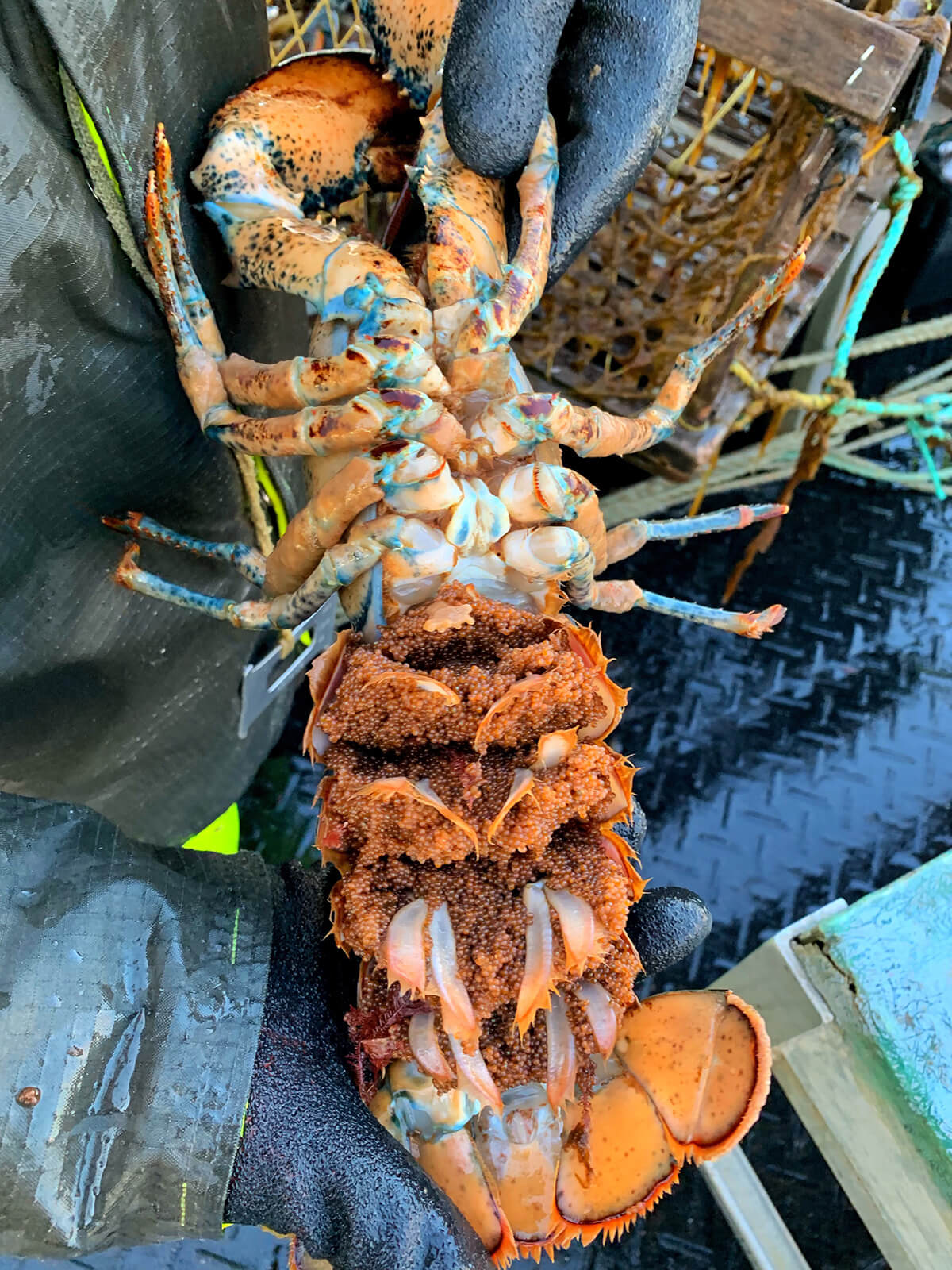
Pregnant females ge tossed back into the water
Each pulled lobster is placed in a tall plastic cylinder, tail down. This prevents them from scooting away or using their claws. It also makes it easier to hold their claws shut as an elastic band is placed around them using a metal instrument. I’m proud to say that after a few stops on the water and a couple hundred photos snapped, I put myself to work by helping out with the “elastiquing” (yes, I invented the word) process. I donned thick gloves and learned that, although they seem slow, the little suckers can snap at you in the blink of an eye. It took me a while to get the hang of it but I got better as the day went on. I was nowhere close to the lightning speed the guys worked at but it was so fun to participate. There was something about being on the open ocean, with the smell of the sea in the air and the breeze in my hair, looking at the infinite horizon and all the beauty surrounding our little embarkation that was truly therapeutic. It’s very hard work but I can understand why these guys do it.
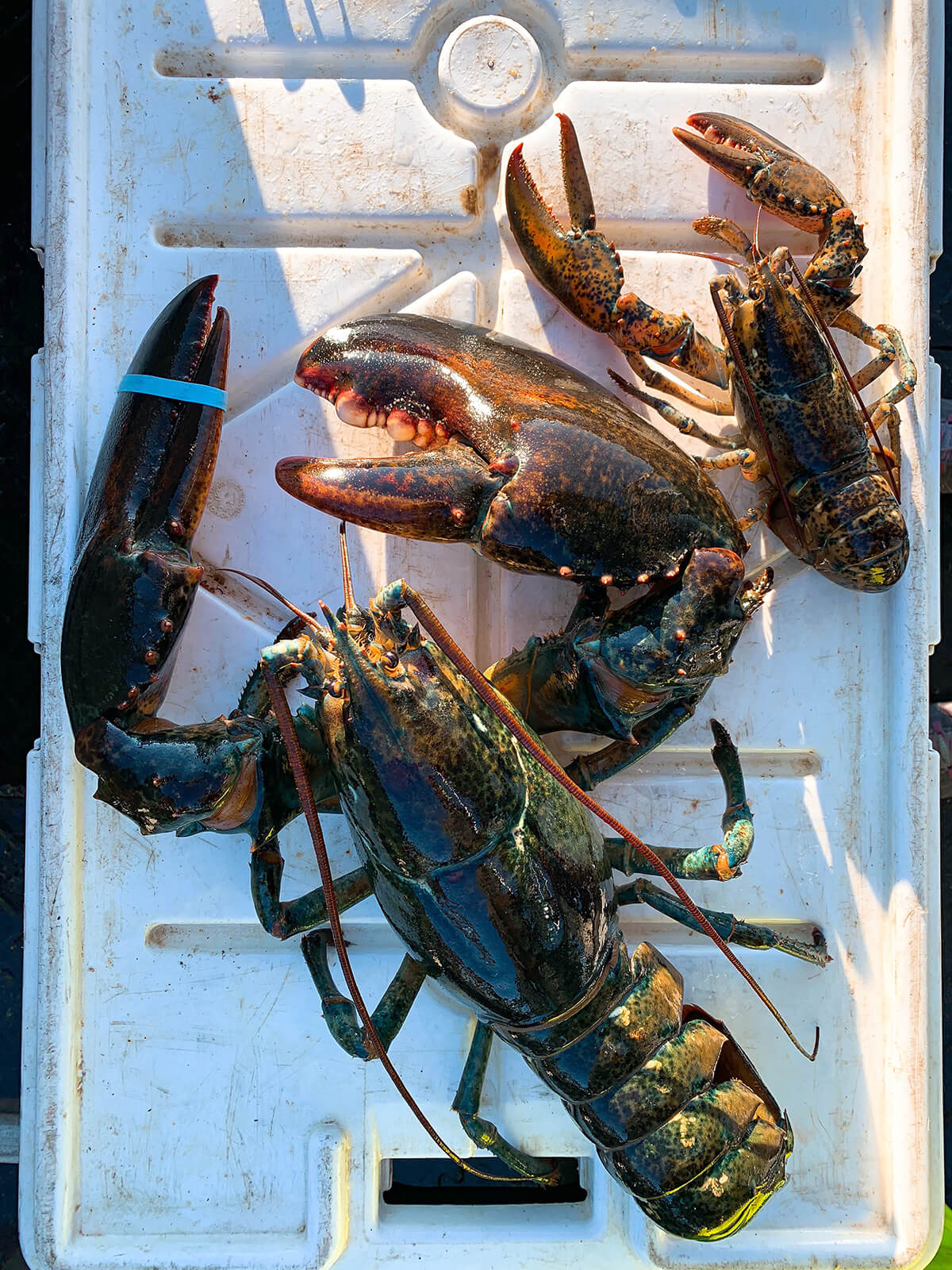
The lobster on the right is a normal one, the one on the left is a monster!
Oysters too!
We brought back 671 lobsters that day, totalling about 950 pounds, an ok day according to the men since we were already getting close to the end f the season. We encountered some special specimen including females filled with eggs and huge lobsters as big as small dogs. I also learned that the bigger the lobster, the older it is. On the way back to port, Christian got an order for some fresh oysters, because apart from lobster fishing, he also farms oysters and mussels. We stopped by his oyster farm and pulled humongous cages buried deep underwater. Les Cultures du Large has been farming oysters in the Gulf of St Lawrence since 2013. It’s an unconventional business since the waters here are too cold for the oysters to lay eggs. The eggs are bought from New Brunswick and placed in the farm for 2 to 3 years until they reach the ideal size. His Trésor du large oysters have gathered many accolades and are very sought after by consumers and restaurants all around Quebec and the surrounding provinces. I cannot even describe what an oyster that fresh tastes like. The plump bivalves taste like seawater, clean and fresh, salty and briny. Just absolutely irresistible!
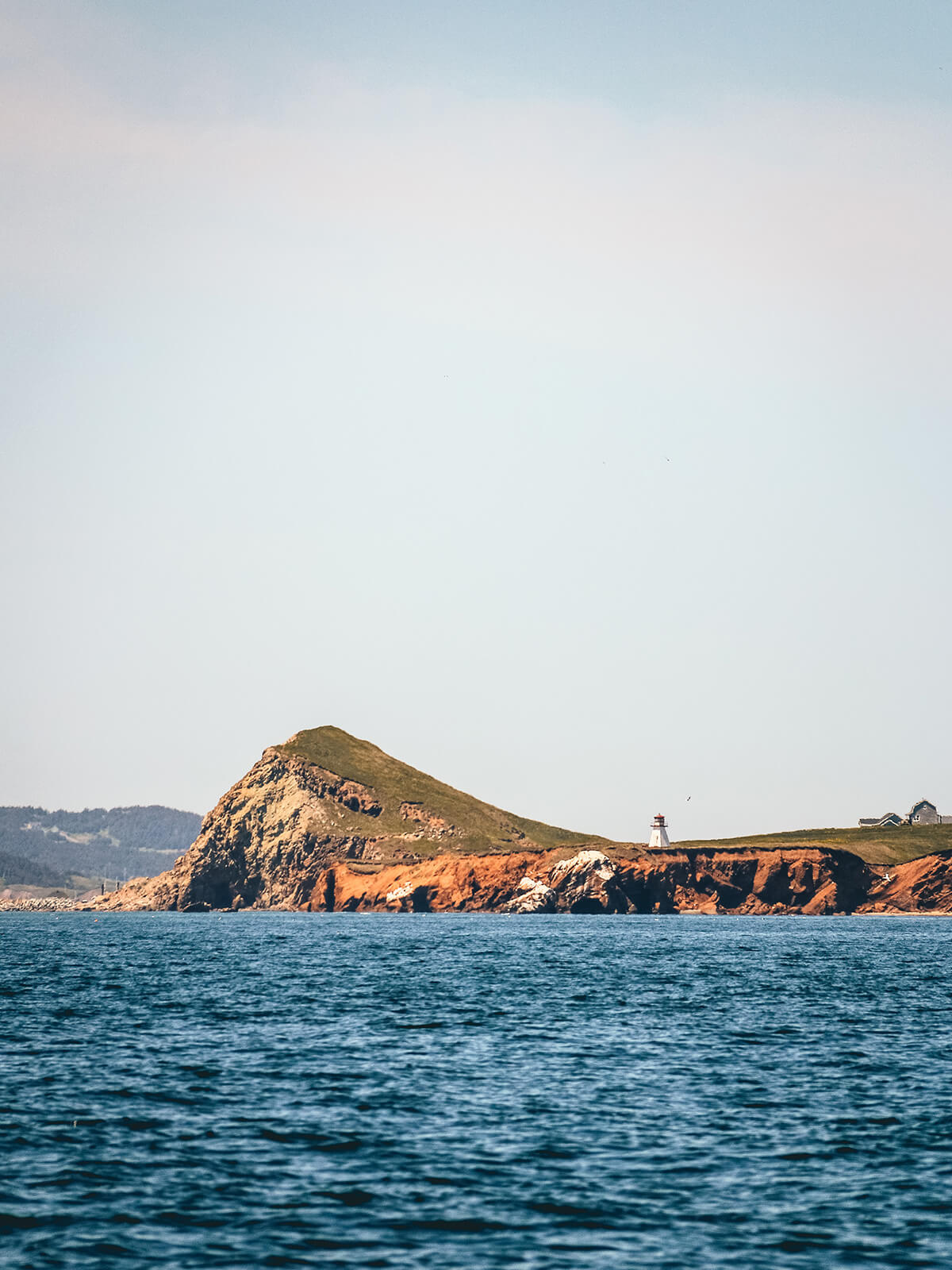
The views of the Magdalen Islands from the water
Our fishing expedition lasted 9 or 10 hours and was truly thrilling. It was the best part of my trip to the islands and a highlight of any trip, anywhere. I would do it again in a heartbeat! I haven’t written about this experience until now because it wasn’t offered to the general public but it is now! Contact Les Cultures du Large and reserve your spot now. Places are limited and the season is short. I promise you’ll love it.
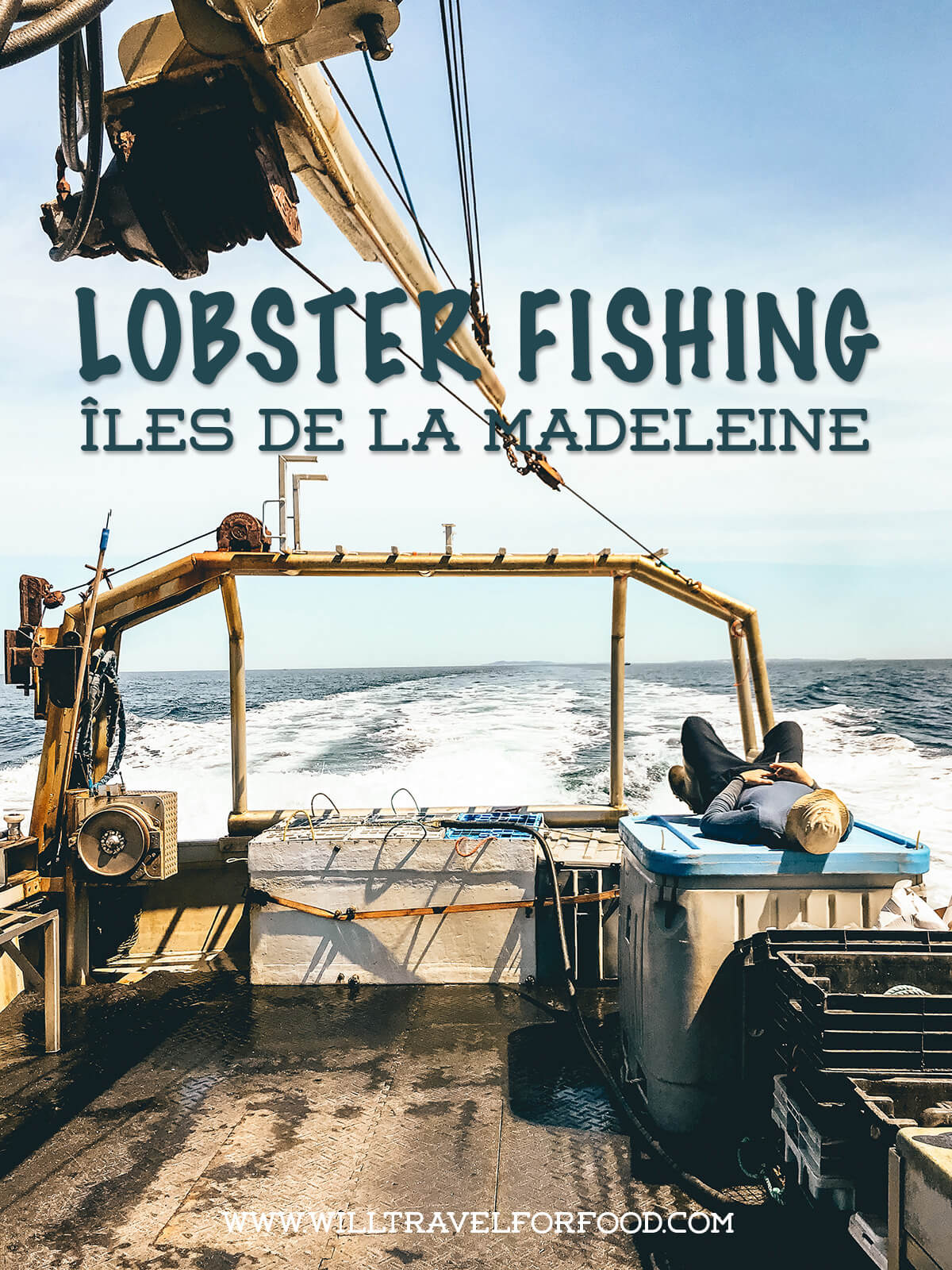
{{ PIN IT! }} Lobster fishing in Quebec’s Magdalen Islands is one of the most thrilling activities you can participate in
Many thanks to Tourisme Îles de la Madeleine for hosting me during the Folle Virée Gourmande food extravaganza and for the great help in planning part of this unforgettable trip.



